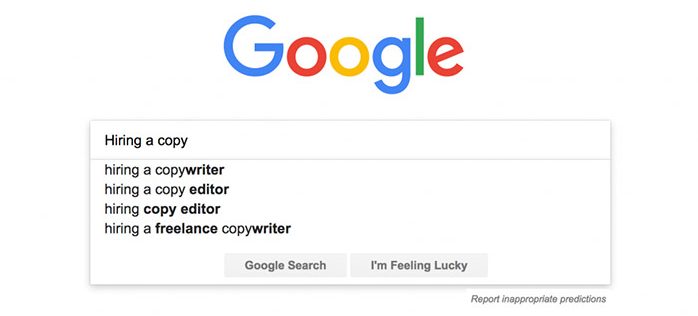
Close your eyes. Take a deep yoga-y breath. Let your mind relax. Another breath.
Imagine if you will, the perfect website:
The design is visually stunning with totally authentic, non-stock images that are a thing of envy. The copywriting is informative and clever (but not too!) and draws you in from the very first header. The site navigation is streamlined and intuitive, and the calls-to-action are clear and oh-so clickable. It’s adaptive. It’s responsive. It’s mobile-first!
You with me? Can you see it? Yes? Me, too!
Now imagine that very same website has one person a day land on it because it has zero SEO value.
This, friends, is a sad reality for many a website. There was budget for the design. There was budget for the development. And there was budget to hire some hungry freelance copywriter to parlay your brand story. But when it came to optimizing the site for search, there was zero dinero. A common mistake. Unfortunate.
But let’s back up a little.
What is SEO exactly? If you’re asking yourself this, a) I’m really really (really) happy you found this blog post, and b) have you been living off the grid for some time?
Okay, so what is SEO? Ever type something into the Google search bar? Of course, you have.
Simply put, SEO (Search Engine Optimization) powers the results that show up in searches (Google, Bing, Yahoo, etc.). These search engines crawl and index your site (a little creepy) and rank them based on how effective the SEO is. Employing SEO in your website copy gives you a greater chance of showing up in searches when someone is looking for your product or services. The idea is to rank higher than your competitors. SEO…good SEO helps you do that by imbuing your website with greater search relevancy and authority.
Writing for SEO
Writing SEO-optimized copy for a website is easier than it sounds. Sure, you have to do some homework. Before you put fingers to keyboard, you’ll need to research who your audience is and what they are searching for and how they are searching (i.e. what words and phrases they are using in those searches). It’s those words and phrases that will ultimately inform your website writing. That doesn’t mean every other word is optimized. After all, who wants to read, “for the best copywriting in San Diego, call Genevieve Crain because Genevieve Crain is the best copywriter in San Diego”? Nobody, that’s who. There’s a difference between writing purely for SEO value, writing for information, and writing for enjoyment. A successful website does all three. When you write for SEO, it should be seamless: What you’re writing about (content) and how you’re writing (style) should be obvious; SEO, on the other hand, should be nearly invisible. In fact, a great way to increase your site’s traffic is to have content that is so interesting and so well written, that others want to link to it or share it on social platforms.
Want to DIY your SEO? While there’s plenty a small business owner or individual can do to improve their website’s SEO value, let’s be clear, if your website is your business’s most valuable marketing asset (and it probably is) and web traffic is key to winning business (ditto), it’s probably a good idea to hire an SEO professional. They have the tools and analytics capabilities that you simply won’t have access to. But if you truly want to take on writing for your website’s SEO salvation, here are some key SEO elements you should know about:
- URL – This is a webpage’s address. It should include keywords and reflect what that page is all about. Bonus for readable URLs!
- Title Tag – Briefly describes what is on a webpage. Optimal length: 50-60 characters. And, yes, that includes spaces. And, yes, it should include keywords.
- Meta Description – Longer than the title tag, this blurb (160-ish characters with spaces) summarizes a page’s content. Again, keywords are, well, key.
- Headlines – Headlines immediately orient readers when they land on a webpage. When you wrap a webpage’s first headline in <H1> it can have a minor positive effect on SEO. So when in doubt…
- Image File Name – Firstly, images on your website = really good idea. Should those image files be optimized? 100%. Make sure your image file names include keywords and phrases. You will get a lot of SEO bang for your buck. Bonus Tip! Separate words with underscores or hyphens.
- Alt Tag – Just like Image Names only totally different. Alt tags (or Alt Text) describe what an image is and Google likes them. Like, really likes them. Enough said?
- Keywords – Too many keywords, you get pinged by Google for stuffing (similar to spamming). Not enough keywords, you don’t rank. Seem like a lose-lose situation? Basically, it is. But that doesn’t mean you shouldn’t include keywords in your content, or more importantly, build engaging content around your keywords. An SEO expert once told me that the sweet spot for keyword density is a ratio of 1-2% of on-page words. Meaning, if you have 1000 words on a page, shoot for 10-20 keywords/phrases to optimize the copy. And not all the same key terms on repeat. Incorporating adjacent terms makes the copy more readable while still supporting SEO efforts.
Above all else, remember you are writing for humans, people looking for something. Yes, they want to find that something, but they also want to emotionally connect with brands and be empowered to make informed choices. Drive them to your site with great SEO and keep them on your site with great content and copywriting.
Thinking of redesigning your website or building one from scratch? We can help you with everything from creative concepting to copywriting, content, and SEO. Contact AMJ to learn more about our services!
Save
Save
Save

